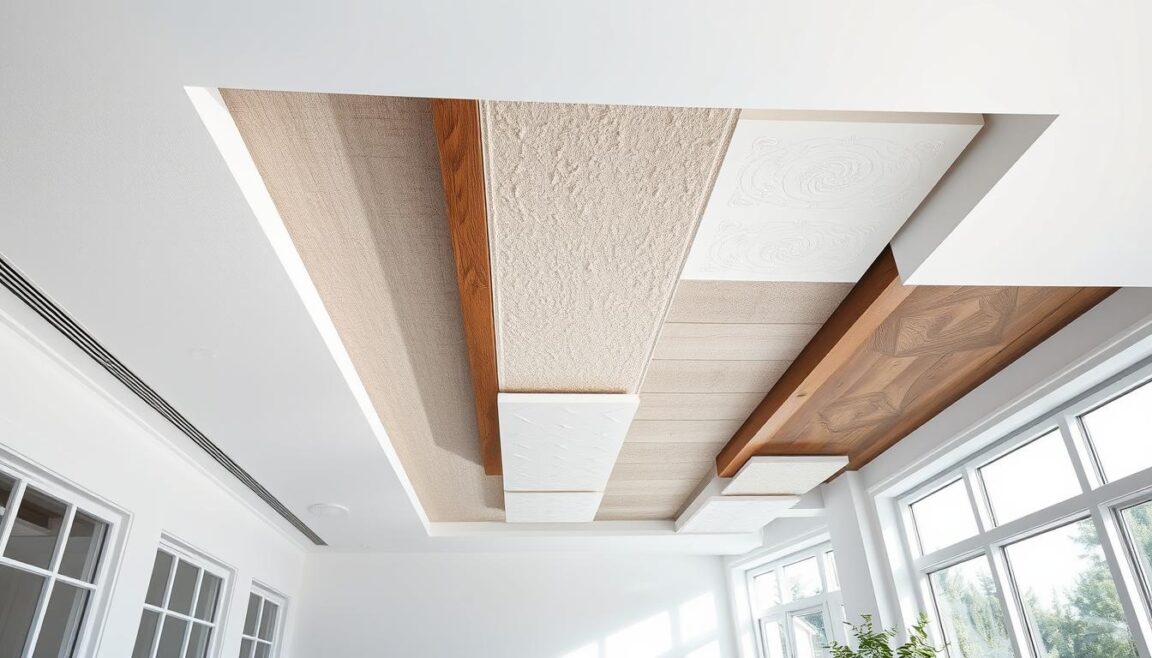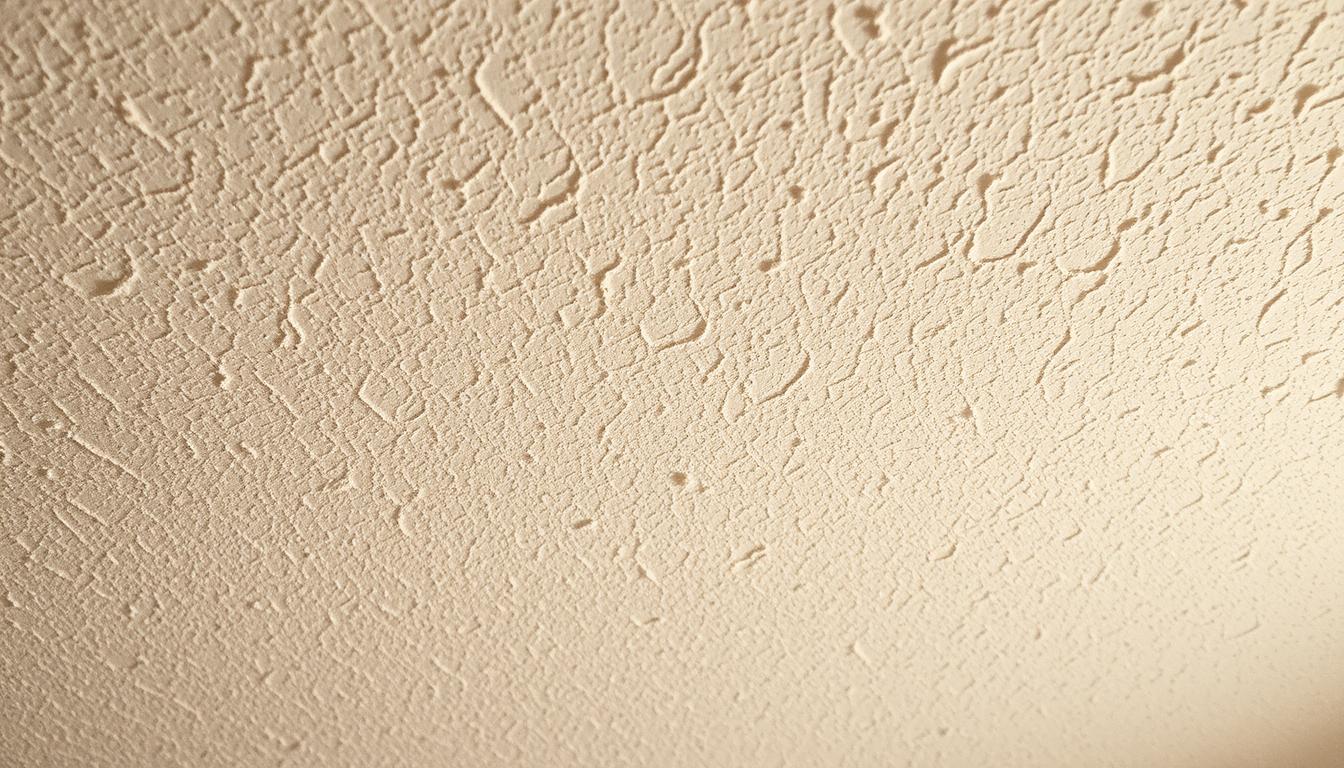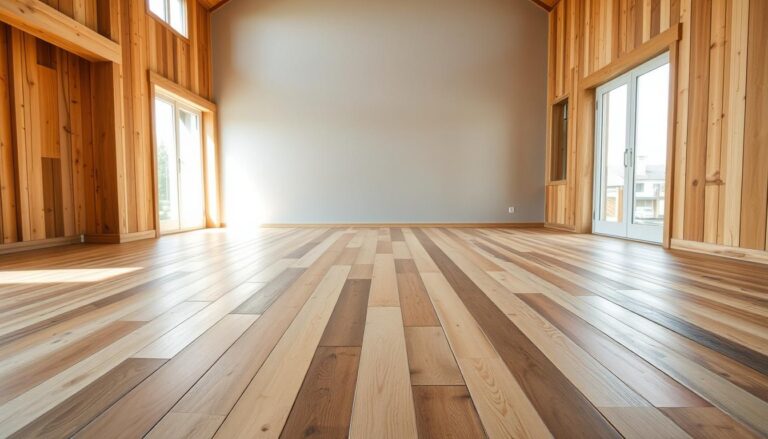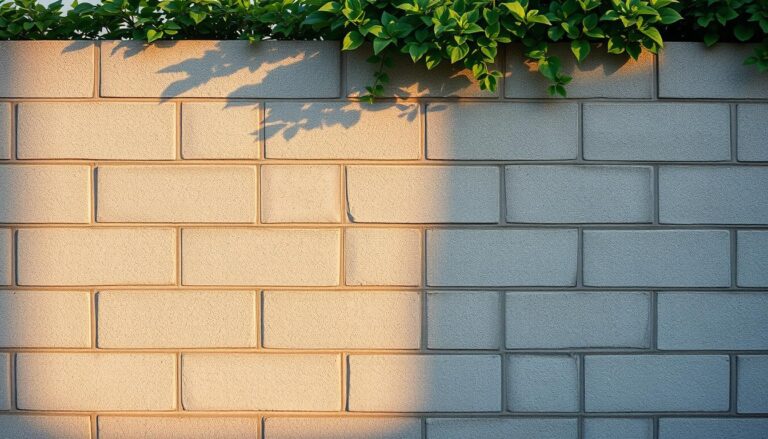Ceiling Texture
When we talk about making our homes look better, ceiling texture is key. It turns a simple ceiling into a beautiful centerpiece of our interior design. We have many textures to pick from, like popcorn, knockdown, and smooth finishes.
These textures not only look great but also hide flaws and improve sound quality. This makes them both useful and eye-catching. Let’s dive into the different ceiling textures and how they change a room’s feel.
Understanding Different Types of Ceiling Textures
Exploring ceiling textures reveals each one adds a special touch to our spaces. The style of ceiling can change a simple room into a place with striking designs. Let’s look at some popular textures and how they shape our indoor world.
Popular Textures We Can Choose From
There are several ceiling textures that fit various tastes and design ideas:
- Popcorn Texture: It gives a cozy, casual vibe and hides imperfections, adding character to the ceiling.
- Smooth Texture: This modern look is sleek and clean, perfect for minimalistic designs and making rooms seem bigger.
- Knockdown Texture: It offers an artistic finish, blending subtlety and style to soften harsh lines.
Impact of Texture on Room Ambiance
The effect of ceiling texture on room atmosphere is huge. Different textures change the look and how light moves in the space. For example, textured ceilings can make big rooms feel cozy and welcoming.
On the other hand, smooth ceilings reflect light better, making rooms feel larger and more open. Knowing these details helps us choose the right texture to improve our interior design.
Choosing the Right Ceiling Texture for Your Space
Choosing the right ceiling texture is key to a room’s look and feel. It’s important to think about room size, the mood you want, and the décor already there. In small rooms, light textures make them seem bigger. In bigger rooms, you can go for more detailed designs.
Factors to Consider When Selecting Texture
When picking a ceiling texture, consider these important points:
- Room Size: Light textures make small rooms feel bigger.
- Lighting: How light interacts with the texture affects the room’s mood. Glossy textures reflect light, making rooms brighter.
- Height: Low ceilings look better with flat textures. High ceilings can handle bold patterns.
- Function: Think about the room’s purpose. Soft textures are great for relaxing areas.
How to Match Texture with Existing Decor Styles
Matching décor is key for a unified look. Here are some tips to help:
- Identify the Style: Know if your room is traditional, modern, or eclectic. This helps pick the right texture.
- Consider Color Schemes: Make sure the texture fits with the room’s colors for a cohesive look.
- Review Furniture: Check your furniture’s style and texture. The ceiling texture should match to create unity.
- Attention to Detail: Small details like light fixtures or trim can greatly affect the ceiling texture’s fit in the design.

By keeping these factors and tips in mind, we can pick a ceiling texture that boosts our personal style and fits with good design principles. This makes every space we create feel thoughtful and welcoming.
Application Techniques for Ceiling Texture
There are many ways to apply ceiling texture, each with its own charm. Spray-on texture is fast and even, great for big areas. Brush techniques let us get creative, making unique patterns on our DIY ceilings.
Stencils are another cool way to add designs with precision. They’re perfect for making a statement. Before starting, make sure the ceiling is clean and primed for better results.
Remember to stay safe while working on ceiling texture. Wear masks and goggles to avoid dust and harmful materials. With the right plan and tools, we can do a great job on our ceiling texturing project.
Maintaining and Repairing Ceiling Textures
Home improvement often takes us to explore ways to make our living spaces better. Ceiling textures are key in this journey. Over time, these textures can wear out. It’s crucial to keep up with ceiling texture maintenance to keep our homes looking great.
For ceiling upkeep, we should use gentle cleaning methods. Harsh chemicals can harm certain finishes. So, we suggest a mix of mild soap and water for regular cleaning. For tougher textures, a soft brush or vacuum can remove dust and cobwebs safely.
When repairs are needed, we have effective methods to fix our ceilings. Whether it’s patching small holes or touching up texture, we have the tools. Knowing how to repair these issues not only makes our ceilings last longer but also keeps our homes looking good.







